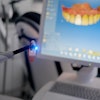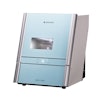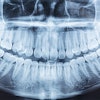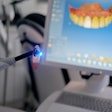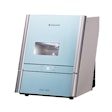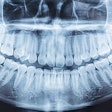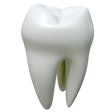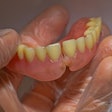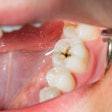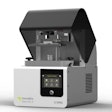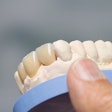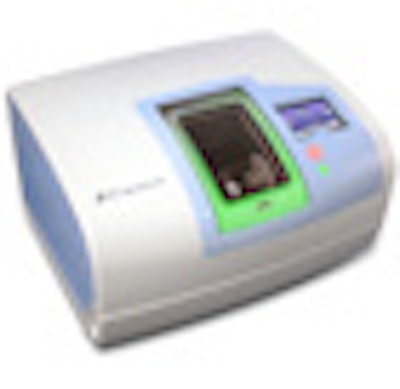
The Cerec MCXL in-office mill makes restorations faster, while E4D Dentist System makes them stronger, according to a study in Gordon Christensen's Clinician's Report newsletter, which reported the findings this month.
In interviews with DrBicuspid.com, executives at both companies agreed with the speed tests, but said the study's finding on strength were not definitive.
"We've known for a long time that the process is much faster with the Cerec," said John Sweeney, vice president of investor relations at Cerec's maker, Sirona Dental Systems.
"Overall, the study was very fair and comprehensive in the areas it examined, but there are many more factors to consider when comparing the mills,” said Gary Severance, D.D.S., vice president of marketing and clinical affairs at D4D Technologies, which manufactures the E4D Dentist.
“Cerec has all along misrepresented the real time on its display.”
— Gary Severance, D4D vice president
The speedy Cerec
The in-vitro evaluation conducted by Clinician’s Report found that the Cerec MCXL finished milling restorations in 39% less time than the E4D Dentist, on average. When both mills were in slow mode, the E4D took about 25 minutes to mill an IPS e.max CAD, while the Cerec MCXL took 16 minutes. For an IPS Empress CAD, the E4D took 19 minutes compared to the Cerec MCXL's 11 minutes.
The newsletter did not report any information about the statistical significance of its research.
For Sweeney, the speed difference is decisive. He estimated that a dentist would save an average of 10 minutes per restoration. Calculating based on an hourly income of $300 and 30 restorations a month, he said the savings could reach $1,500 per month. (He acknowledged that dental assistants might operate the systems at a much lower hourly rate.)
“We've known for a long time that the process is much faster with the Cerec.”
— John Sweeney, Sirona vice president
Dr. Severance said that speed isn’t everything. “There’s a lot more to buying a car than how fast it can go from zero to 60. It’s safe to say that there are benefits to a more controlled milling speed, like micro-thin applications -- to 150 microns -- and fine edge detail with materials like IPS Empress. I think further data will highlight this."
The E4D is also more reliable in telling users how long it will take, Dr. Christensen's researchers found. They said that the E4D mills at a constant rate regardless of whether its bur is wearing down.
Milling IPS e.max CAD in slow mode, E4D Dentist burs broke or needed changing 166% more often than the Cerec MCXL burs, they noted. Also in slow mode, the E4D went through 50% more burs on the IPS Empress CAD. But in fast mode milling IPS Empress CAD, the Cerec mill used up 38% more burs than the E4D.
Another difference between the two was that the Cerec MCXL slowed down when its bur was wearing out but still displayed an estimated time as if it were milling just as fast, Clinicians Report found.
"Cerec has all along misrepresented the real time on its display," said Dr. Severance. "We decided to show the actual milling times, not a false representation. If I had a choice I would prefer reliable, accurate, and consistent, and I think the customers would too."
He said D4D is working on an iPhone application that will alert users when the mill is finished with a job.
Strength
The Clinician's Report evaluators found that IPS e.max bars milled by the E4D measured 9% higher in flexural strength than those milled by the Cerec MCXL. IPS Empress CAD bars were 6% stronger.
But both Sweeney and Dr. Severance said the finding wasn't definitive. Sweeney said when the bars were finished, hand-polished, and glazed, as they would be for an actual restoration, the difference between the two became statistically insignificant.
Dr. Severance said testing a bar in a laboratory doesn't tell you much about the strength of a crown in a mouth. "It would be interesting to see what the real effect is on milling an actual restoration -- performing similar processes that are used chairside."
Other differences
According to Clinician's Report, the two systems had these additional differences as well:
- If interrupted by low coolant pressure or compressed air, the E4D cannot resume milling the same block but will have to start over, and sometimes the ceramic block can't be reused. However, the E4D is less likely than the Cerec to be interrupted by such events.
- Operators can get optional conical burs for the E4D that provide "improved strength and finer finish."
But Dr. Severance said scrutinizing the fine points of the two machines is less important than the researchers' conclusion that in-office CAD/CAM can succeed. "Research shows that in-office milling can work well, that restoration margins can be as good as restorations made manually, that the materials used may be superior to lab made restorations, and that the aesthetic result can be acceptable with practice," the researchers wrote.
"Embrace the technology and check them both out," said Dr. Severance. "'If you don't like the E4D, buy the Cerec. But I'm confident you'll prefer the E4D.'"
